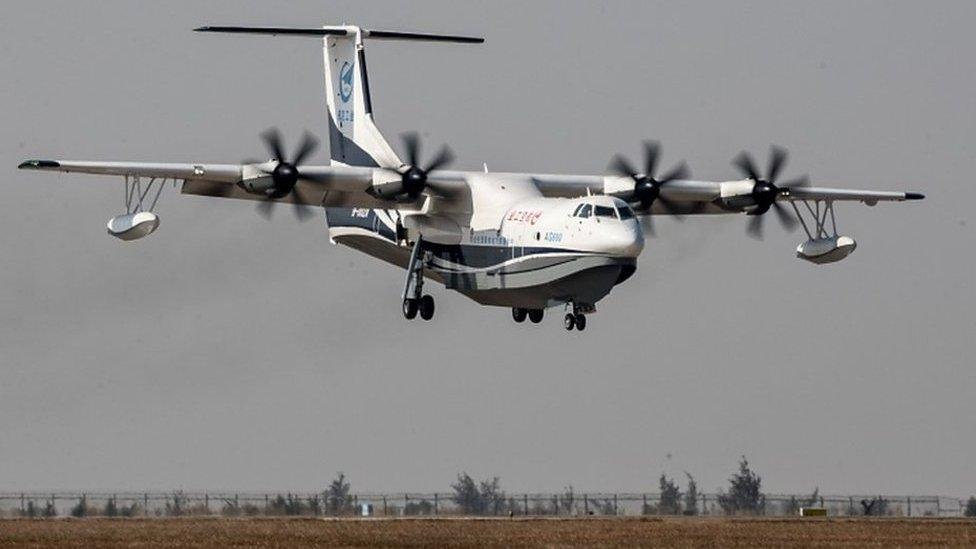Hong Kong-Zhuhai bridge: World's longest sea crossing opens to quiet start
- Published
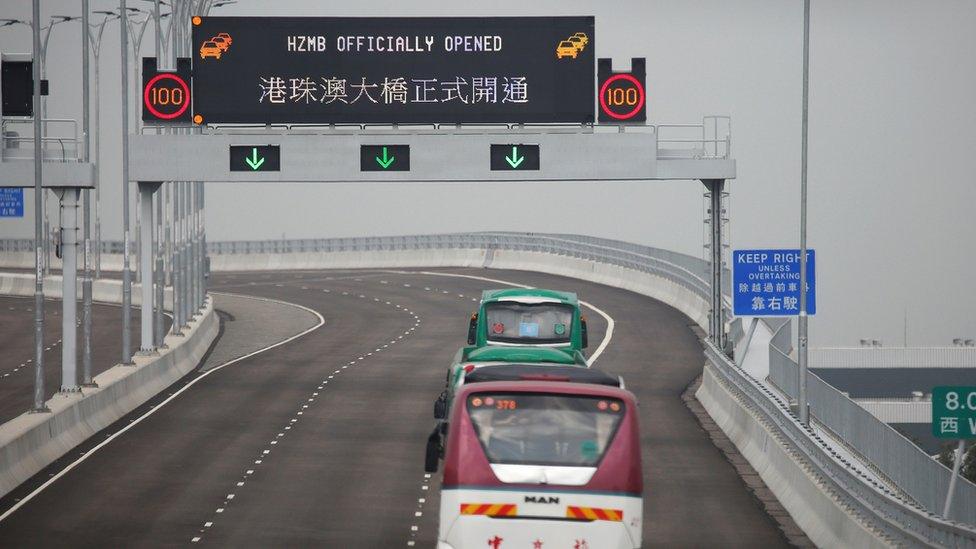
Officials said traffic was not expected to be busy on the first day
The world's longest sea crossing bridge opened to the public on Wednesday but traffic was light on its first day.
Officials said they did not expect many vehicles to immediately take to the road, adding that it could take "time to build".
The $20bn (£15.3bn) bridge spans 55km (34 miles) and connects Hong Kong to Macau and the mainland Chinese city of Zhuhai.
It was officially opened by Chinese President Xi Jinping on Tuesday.
"Every big infrastructure [project] has a relatively low volume of passenger and traffic flow in the initial period. It takes time to build up," transport secretary Frank Chan told reporters.
There were virtually no cars or lorries to be seen on the bridge but the route was plied by private shuttle buses, said the BBC's Martin Yip, who crossed from Hong Kong to Macau on Wednesday aboard one of these buses.
There was a considerable crowd queuing up for shuttle buses at the Hong Kong terminal. "The atmosphere at the terminal was buzzing - it was quite busy and people were queuing up, though many of them were pensioners. There weren't many young people," he said.
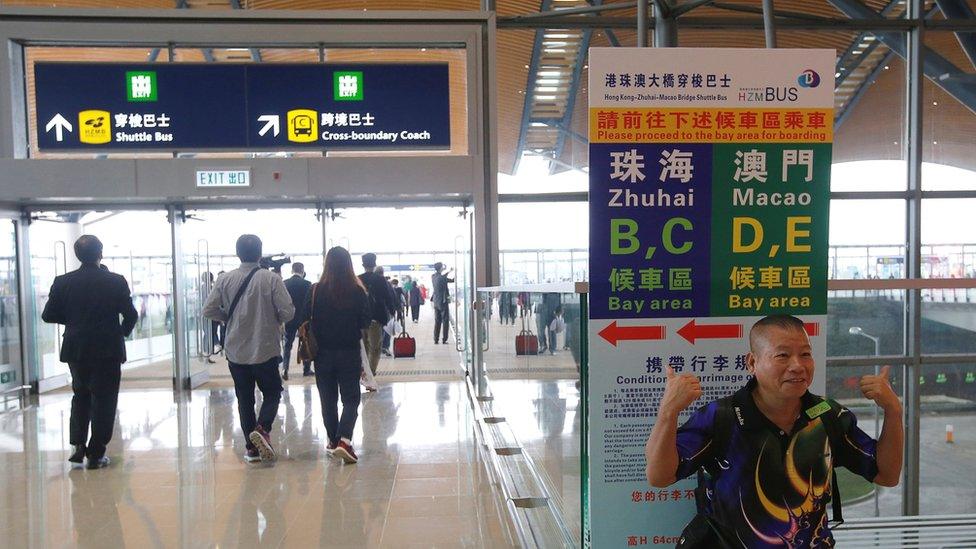
Shuttle buses have been bringing eager commuters across the border
Some eager passengers documented the entire journey on their phones, with one woman telling news agency AFP that she wanted to "check out the view".
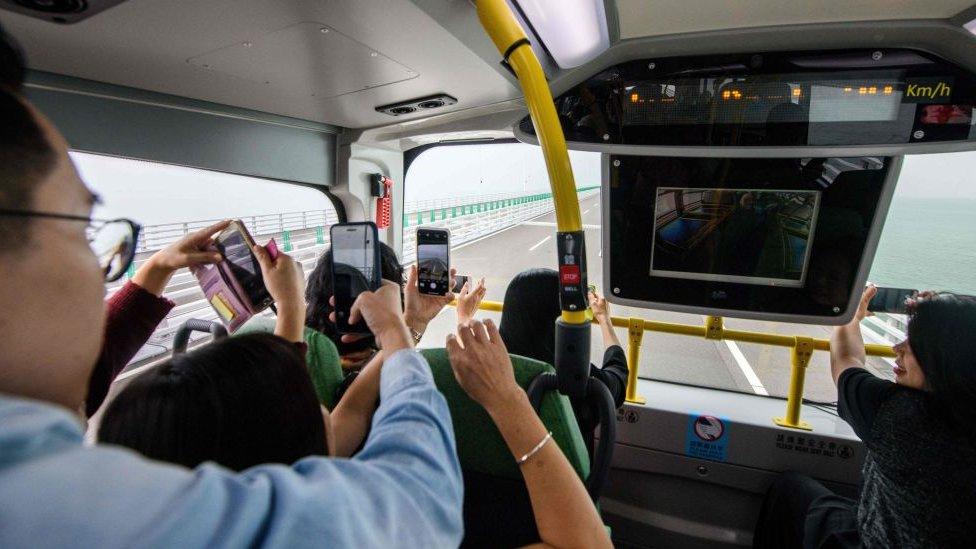
Private drivers who want to cross the bridge have to obtain special permits, which are allocated via a stringent quota system. All vehicles also have to pay a toll.
Only 10,000 permits are available for Hong Kong residents who want to drive to Zhuhai,, external which is located in the province of Guangdong. The permits are valid for five years.
To make matters more complicated, drivers will also have to change which side of the road they are on at the crossing.
People drive on the left in Hong Kong and Macau but the bridge is Chinese territory and special merger channels have been built to cope with this.
Flying over the world's longest sea bridge
Authorities initially estimated that 9,200 vehicles would cross the bridge every day. They later lowered their estimations after new transport networks were built in the region.
Special cameras will be on the look-out for drivers on the bridge who show signs of getting sleepy, among other checks - yawn three times and the authorities will be alerted, local media report.
An engineering marvel
Designed to withstand earthquakes and typhoons, the bridge was built using 400,000 tonnes of steel, enough to build 60 Eiffel Towers.
About 30km of its total length crosses the sea of the Pearl River delta. To allow ships through, a 6.7km section in the middle dips into an undersea tunnel that runs between two artificial islands.
The remaining sections are link roads, viaducts and land tunnels connecting Zhuhai and Hong Kong to the main bridge.
In the past, travelling between Zhuhai and Hong Kong would take up to four hours - the new bridge cuts this down to 30 minutes.



'Bridge of death'
But the bridge has also earned its fair share of criticism.
It has been dubbed the "bridge of death" by some local media outlets. At least nine workers on the Hong Kong side have died and officials told BBC News Chinese that nine had died on the mainland side, too.
There have also been concerns about the environmental impact, with conservations groups saying the project may have caused serious harm to marine life in the area - including the critically rare Chinese white dolphin.
"The project has made irreversible damage to the sea," said Samantha Lee, Assistant Director of Ocean Conservation at the WWF. "I am worried that the number will never rise again."
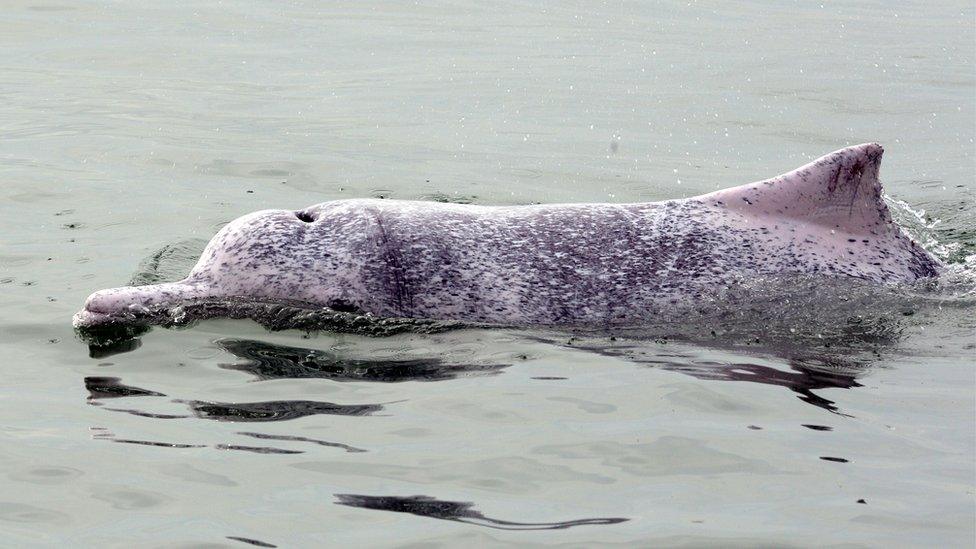
It is rare to see Chinese White Dolphins around the bridge after years of construction, say environmental groups
The bridge, surrounding link roads and artificial islands cost a staggering $20bn to build - the main bridge alone cost $6.92bn.
But according to an estimate by BBC Chinese, the bridge will only earn around $86m in tolls per year.
Chinese officials say it will generate up to 10 trillion yuan ($1.44tn; £1tn) for the economy, but doubts have been cast on that figure by Hong Kong lawmakers.
- Published23 October 2018
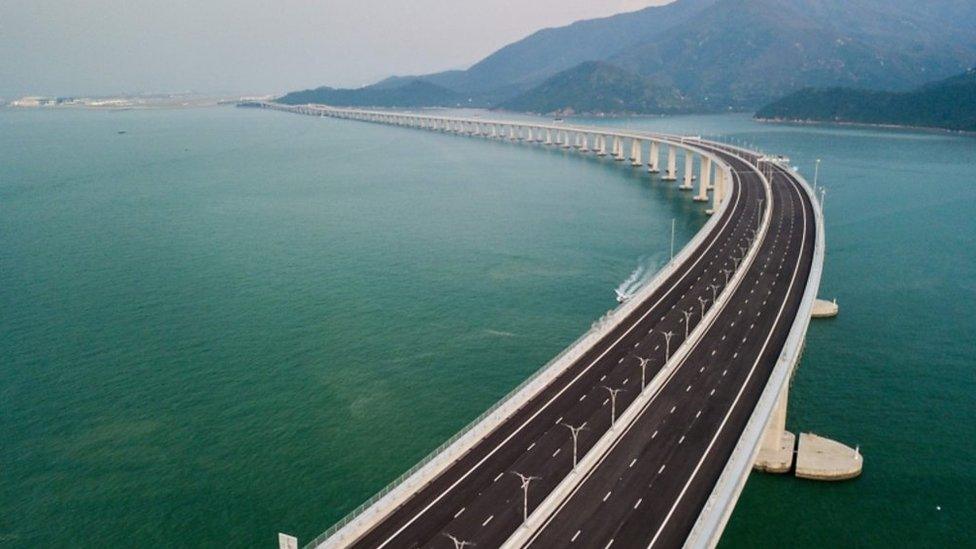
- Published22 October 2018
- Published20 October 2018
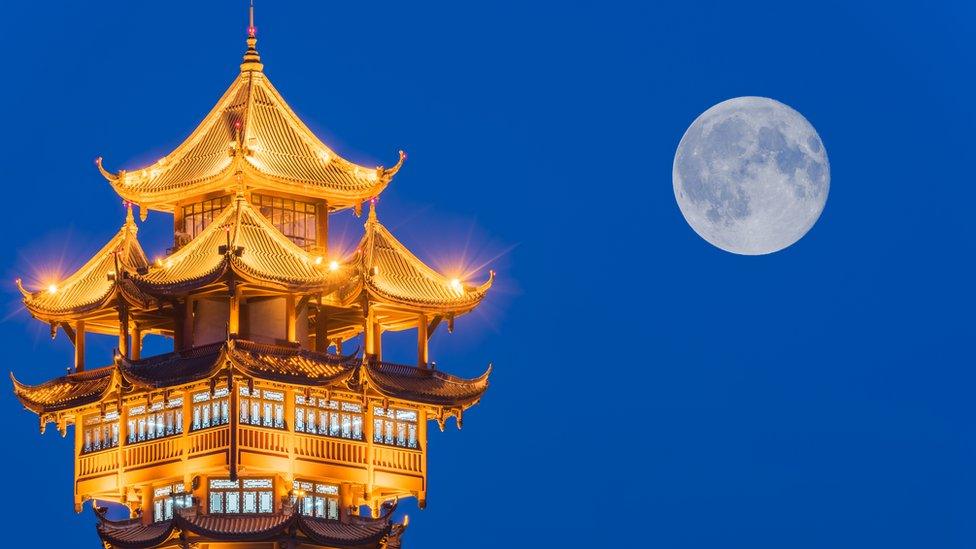
- Published24 December 2017
